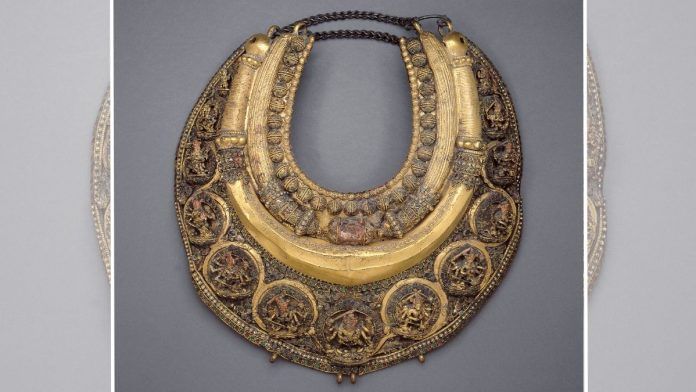An ornate gilt copper ritual collar from mid-seventeenth-century Nepal is housed at the Art Institute of Chicago, and has been the subject of a repatriation campaign since 2021. An inscription on the ornament attributes it to the king Pratap Malla (r. 1641–1674) and invokes Taleju Bhawani, the patron goddess of the Malla kingdom — suggesting that it was either a votive offering by the king, or worn by him as a ritual ornament.
The ornament is in the form of a rigid crescent-shaped collar measuring approximately 35 centimetres in diameter and 9 centimetres at its thickest. The ends feature two loops each, into which two short chains are hooked, to fasten the collar. It is visually divided into five bands of increasing breadth, each with different shapes and motifs rendered in high relief, and some encrusted with semi-precious stones.
The two innermost bands are modelled as rows of rudraksha beads — dried stones of the fruit of the utrasum bean tree, Elaeocarpus ganitrus, which are commonly used as prayer beads in South Asia. The first, and narrowest, is a row of small, plain beads, and the second has much larger beads decorated in dotted patterns. The third band appears as tubular, with fine lengthwise ridges on either side, etched with a herringbone-like pattern and leading into intricate gem-studded floral and spiral patterns towards the middle; it has an amulet case rendered at the centre.
The fourth band is also tubular and decorated on either side. It has a large plain middle portion with flat faces, bearing the inscription in (most likely) Newari script: ‘Victory to the mother goddess! [This is] the necklace of the great king, lord of kings, lord of the poets, the victorious Pratapamalladeva’, in which the king is bestowed with the honorific – deva (‘lord’). The fifth and outermost band of the collar is profusely decorated and encrusted with gems. These are embedded in various floral motifs and patterns, which surround thirteen roundels, each featuring a sacred figure. Eight of these comprise the Ashtamatrika — a set of eight (ashta) mother goddesses (Matrika) — all depicted as Mahishasuramardini, the form of Durga slaying the demon Mahishasura. The remaining five are other guardian deities.
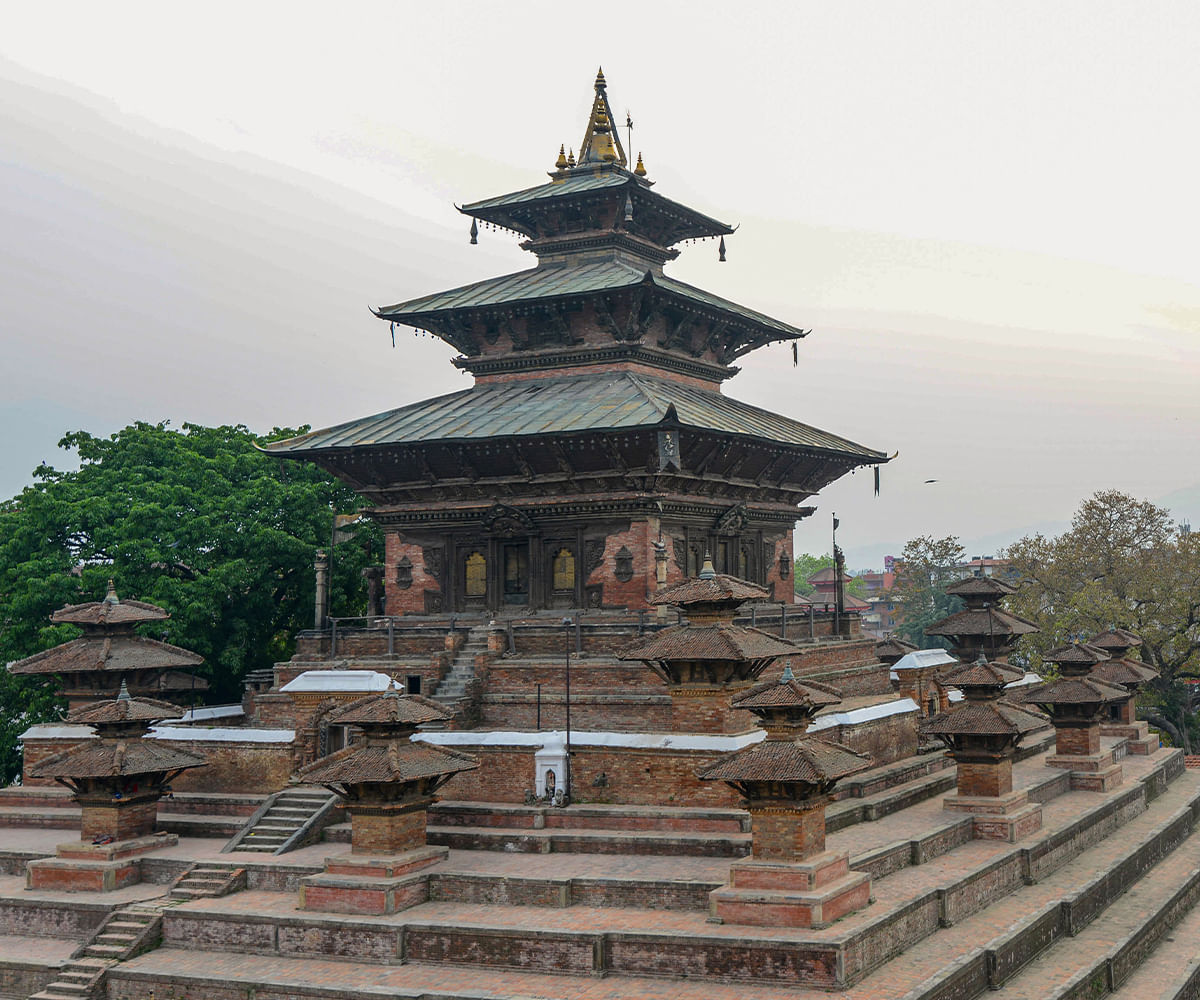
Crafted on royal commission, the ornament displays the expert metalwork of artisans from the Sakya caste of the Newar community in the Kathmandu Valley. The Sakyas are goldsmiths and metalworkers who craft idols in modern Nepal; according to local legend they were given their name by the Buddha himself when he visited the region, after his own clan name.
The mother goddess mentioned in the inscription is Taleju Bhawani, whose arrival and worship in Nepal, as well as her subsequent adoption as the patron deity of the Malla kingdom, are the subject of various legends. It is widely believed that the worship of the goddess was introduced in Nepal by Harisingh Deva (r. 1304–24) of the Karnat dynasty of Mithila (present-day northeastern India), though scholars have noted that this is historically inaccurate and that Taleju was likely known in Nepal before the twelfth century CE. However, her cult did receive significant impetus in Malla times as a result of Brahmanical influence from Mithila.
Malla kings — many of whom traced their ancestry back to Mithila’s Karnat dynasty — adopted her as their kuladevi (tutelary deity of the lineage), and often as their personal deity (istadevata). A Tantric mantra dedicated to Taleju Bhawani was thought to ensure the longevity of the dynasty’s rule and was passed from the incumbent king to his successor only when the former was close to death, though Pratap Malla is said to have been deprived of his inheritance of the mantra due to court intrigue.
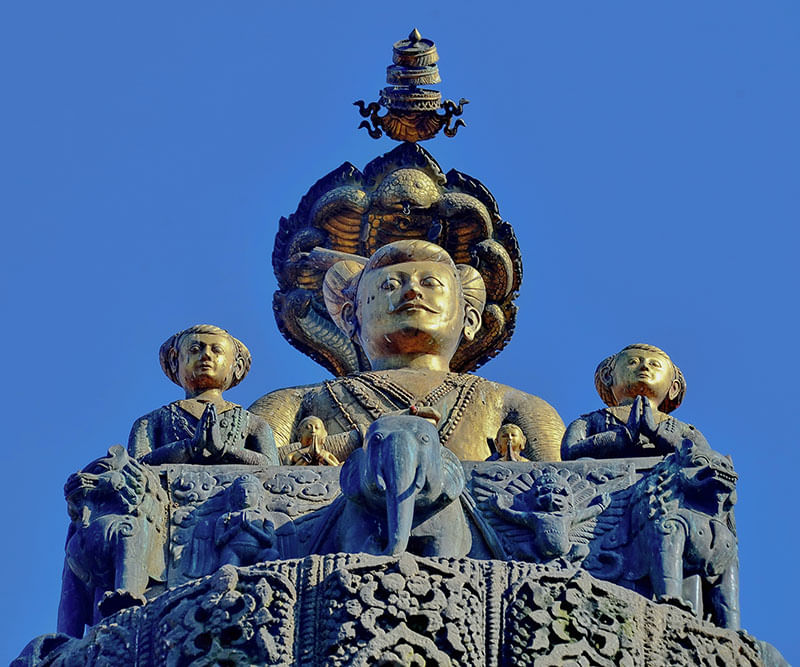
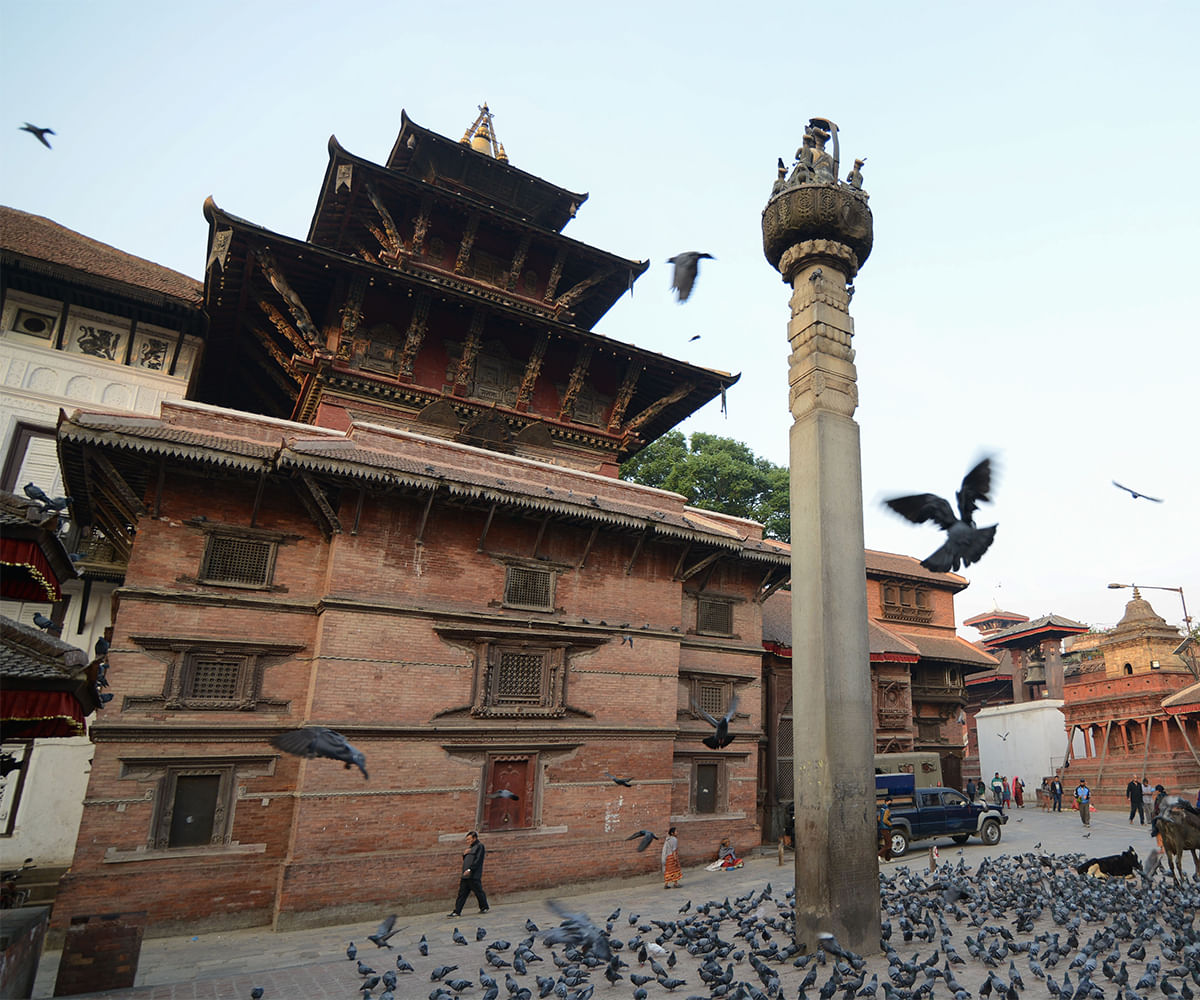
Throughout his reign, Pratap Malla contributed greatly to the renovation and upkeep of the Taleju Bhawani temple in the Hanuman Dhoka complex, built by the Mallas in Kathmandu. The collar may be one of the many votives he would have offered to the goddess, and was kept at the temple. It was revealed to worshippers only once a year when the temple opened its doors to the public during the festival of Dashain, until 1970 when it was shifted from the Taleju temple to the Kathmandu Museum for better care and safekeeping.
Also read: A neo-Gothic cathedral bears the last vestiges of early Christianity in India
In 1976 the necklace vanished from the museum and surfaced in Chicago, when it was purchased by the art collectors Marilyn and James Alsdorf from an antique dealership based across Nepal and the US. Later the same year it was given on long-term loan to the Art Institute of Chicago, and formally donated to the museum in 2010. It is currently on display in the museum’s Arts of Asia section, specifically the Alsdorf Galleries, instituted in 2008 to house the couple’s large donation of over five hundred South Asian artefacts.
Since 1956 the export of cultural objects has been banned in Nepal, and the import of stolen cultural property has been prohibited since 1970 by a UNESCO convention, after which industry standards for antique collecting and dealing became more stringent. Years after the sale of the Taleju Bhawani necklace, the dealer from whom the Alsdorfs acquired it admitted to using methods that were not up to the ethical standards of modern industry practice.
In 2021, Nepal’s state department of archaeology submitted a request to the Art Institute of Chicago for the repatriation of the necklace. This was prompted by a Nepali professor’s social media post in response to seeing the sacred artefact on display in the museum, which garnered international attention. The Institute countered with a request for evidence to prove that the necklace originated in Nepal, the inscription linking it to the Malla dynasty notwithstanding. In June 2022, the priest of the Taleju temple discovered a scroll containing an inventory of Pratap Malla’s gifts to the temple, of which one entry described an ornament with a matching inscription. The government submitted the scroll as evidence to the museum, but no action followed.
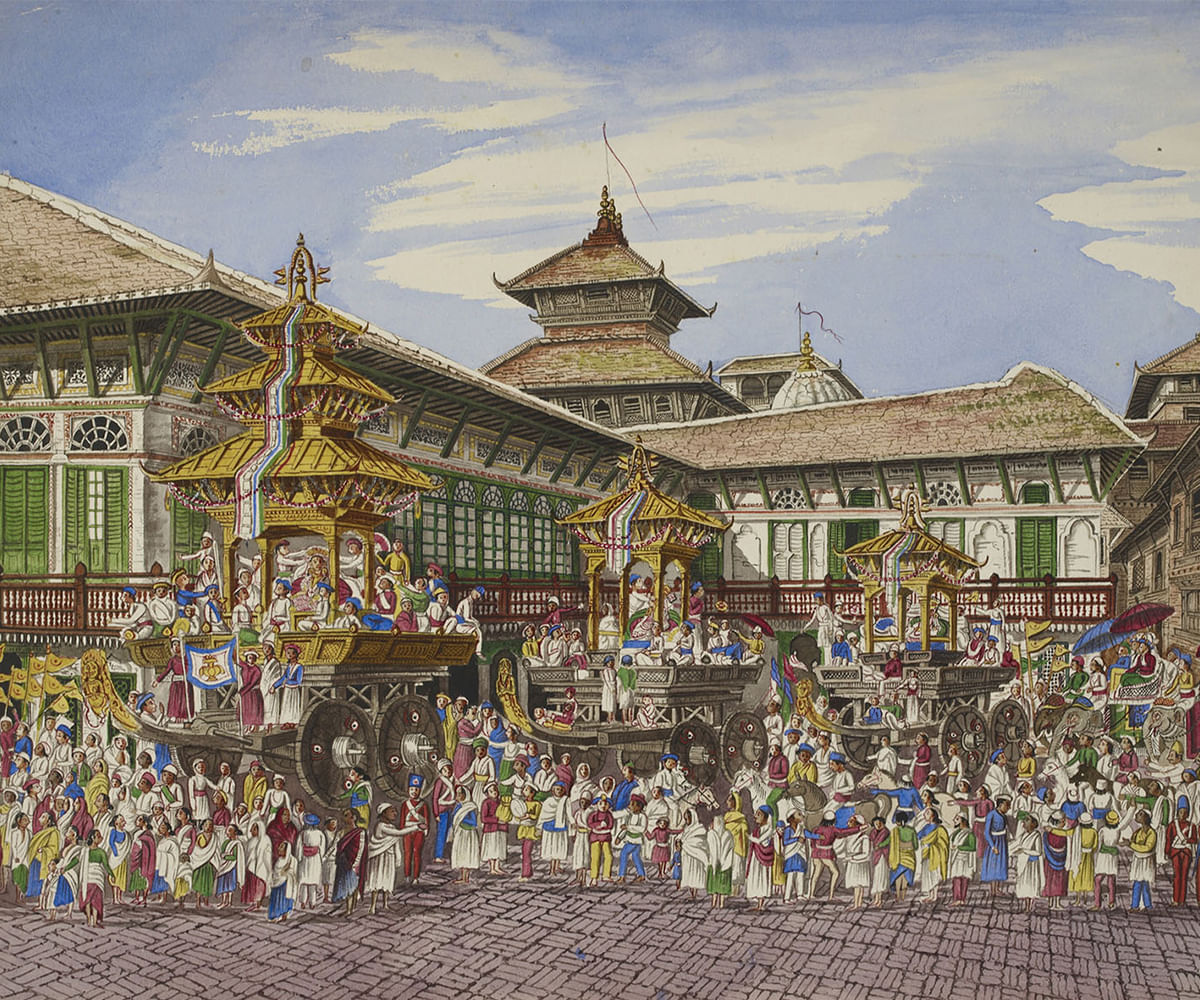
A 2023 report by ProPublica and Crain’s Chicago Business alleged that the ornament was stolen, and published supporting evidence. The report also claimed that the Alsdorf collection at the museum comprises many more such artefacts for which there is proof that they are likely to have been stolen from South Asian and Southeast Asian countries. Four of these, including the present collar, are from Nepal. The provenance of several other items in the collection is unestablished and does not fulfil modern industry standards. While nine stolen artefacts from the Alsdorfs’ personal collection have been repatriated to their respective countries, including a Shiva sculpture from Nepal, the request for the return of the Taleju Bhawani necklace has not yet been granted, at the time of writing.
This article is taken from the MAP Academy‘s Encyclopedia of Art with permission. The MAP Academy is a non-profit, open-access educational platform committed to building equitable resources for the study of art histories from South Asia. Through its freely available digital offerings—Encyclopedia of Art, Online Courses, and Stories—it encourages knowledge-building and engagement with the visual arts of the region.



